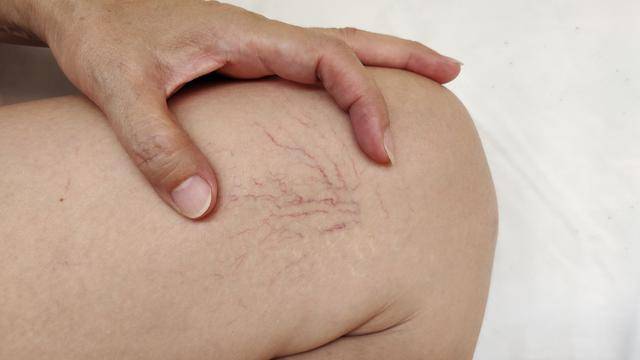Before reading this article, we sincerely invite you to click “Follow” to receive professional medical popular science knowledge every day, helping you and your family improve the quality of health life. Thank you for your support!
In people’s daily lives, when mentioning diseases, we often pay attention to familiar cardiovascular diseases, diabetes, and so on. However, some diseases, although not well-known by name, pose a real threat to our health in real-time, such as varicocele.
The term may sound unfamiliar, but according to statistics, 5% to 20% of adult males are affected by this disease, and in infertile males, this proportion can reach as high as 35% or even higher. Therefore, varicocele is actually a problem that cannot be ignored.
So, why is such a relatively common disease often overlooked by people? The main reason is that its early symptoms are not obvious, and many patients only discover that they have varicocele during fertility examinations after marriage.
That’s why today we want to specifically point it out to remind male friends to be vigilant and pay attention to their physical health.
What is Varicocele
Simply put, varicocele refers to the abnormal dilatation, elongation, and twisting of a part of the veins in the spermatic cord. This condition mainly occurs in the left spermatic vein, which is due to the special anatomical structure: the left spermatic vein directly enters the left renal vein at a right angle, while the right side enters the inferior vena cava obliquely, making the hydrostatic pressure higher on the left side and making varicocele more likely to occur.
In addition to anatomical reasons, the “nutcracker phenomenon” is also a common factor leading to varicocele. This phenomenon refers to the left renal vein being compressed between the aorta and the superior mesenteric artery, causing venous reflux obstruction and thereby triggering varicocele. Furthermore, dysfunction of the left renal vein valve, abnormal tissue structure of the vessel wall, and other reasons can also cause varicocele.
It is worth mentioning that genetic factors also play a certain role in the occurrence of varicocele. If there is a similar medical history in the family, the chances of developing this disease increase.
Prolonged sitting and unhealthy lifestyle habits are also risk factors. In modern society, due to work and life pressures, people often sit in front of computers for hours, undoubtedly increasing the risk of varicocele.
Symptoms and Diagnosis of Varicocele
The symptoms of varicocele vary from person to person, and some patients may have no obvious discomfort at all. But for symptomatic patients, the most common manifestations are scrotal swelling and discomfort, especially after prolonged sitting or vigorous exercise.
This sense of swelling sometimes comes with a dull pain, causing considerable inconvenience in daily life. Some patients may even experience radiating pain in the lower abdomen or lower back, and more severe cases may also be accompanied by signs of neurasthenia and decreased sexual function.
When suspecting varicocele, timely medical diagnosis is crucial. Physical examination is the first step, during which the doctor can palpate the scrotum to check if there is a worm-like mass of veins.
The Valsalva maneuver is also a commonly used test method. When the patient inhales deeply, holds their breath, and exhales forcefully, the doctor can observe if there is obvious varicocele.
In addition to physical examination, there are auxiliary diagnostic methods available such as color Doppler ultrasound examination, which combined with the Valsalva maneuver can diagnose varicocele conveniently, quickly, and accurately.
In recent years, the application of higher-resolution ultrasound and dynamic hemodynamic analysis and other new technologies has significantly improved the accuracy of diagnosis. For difficult cases, imaging examinations such as CT, MRI may also be used to clarify the cause.
Psychological factors should not be ignored either, as long-term psychological stress and anxiety can exacerbate symptoms, making psychological adjustment also an important aspect.
Overall, although there are various diagnostic methods for varicocele, early detection of problems and adopting the correct treatment methods are crucial. We hope that through this article, we can provide useful information to male friends and help everyone better understand and prevent this disease.
Finally, do you have any experiences or opinions to share? Feel free to leave a comment in the comment section!


